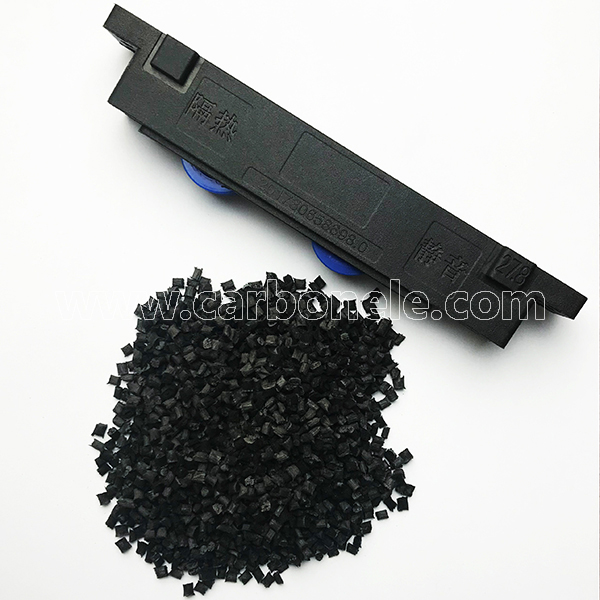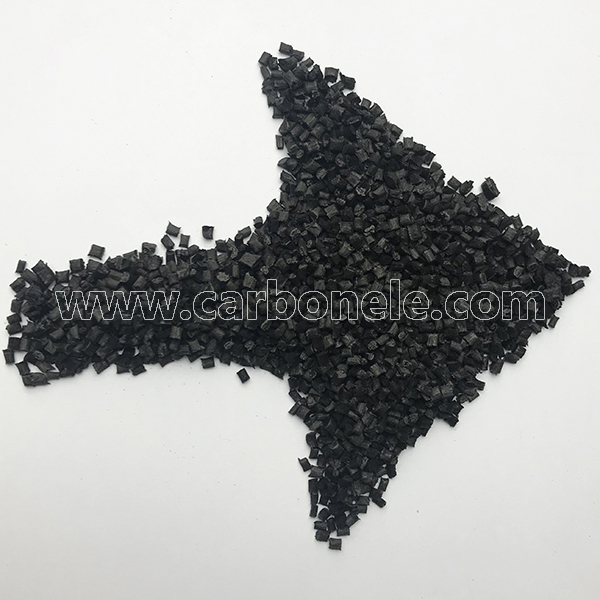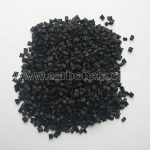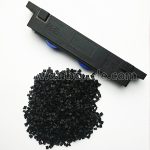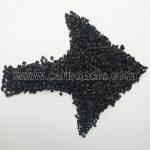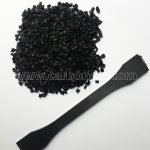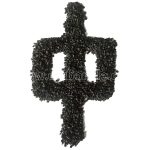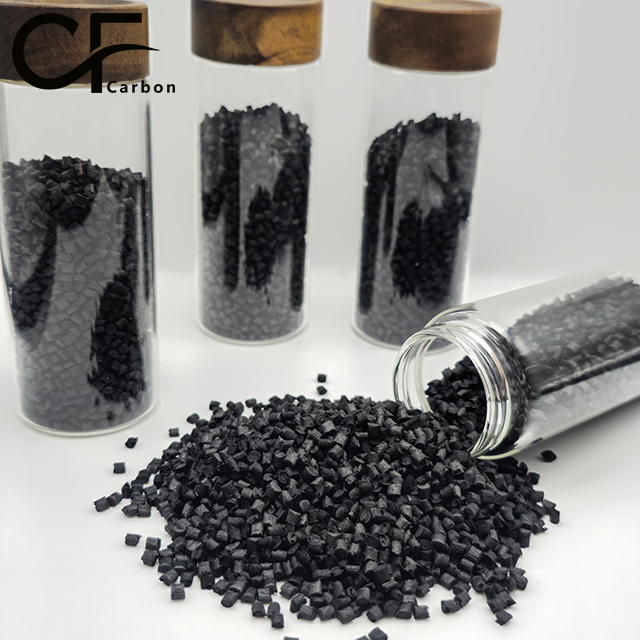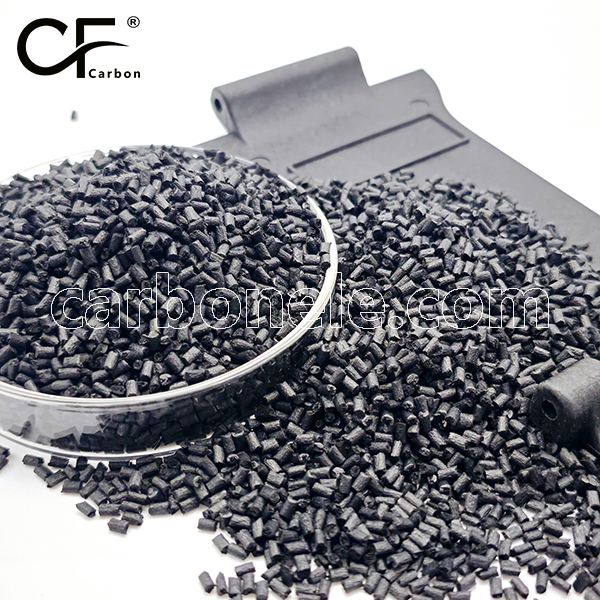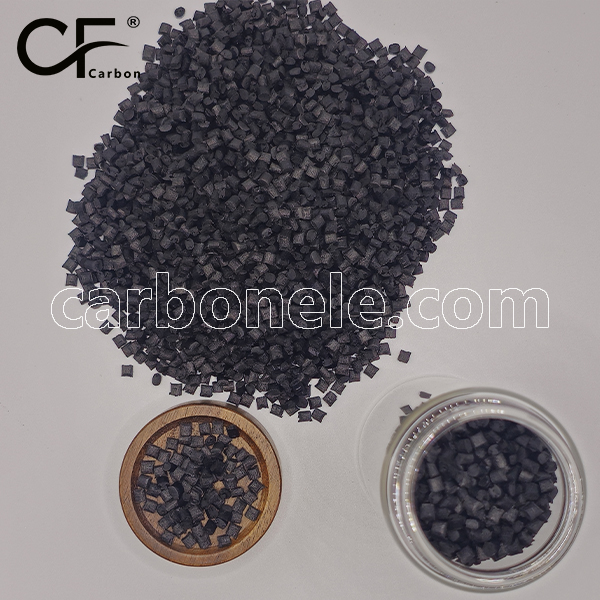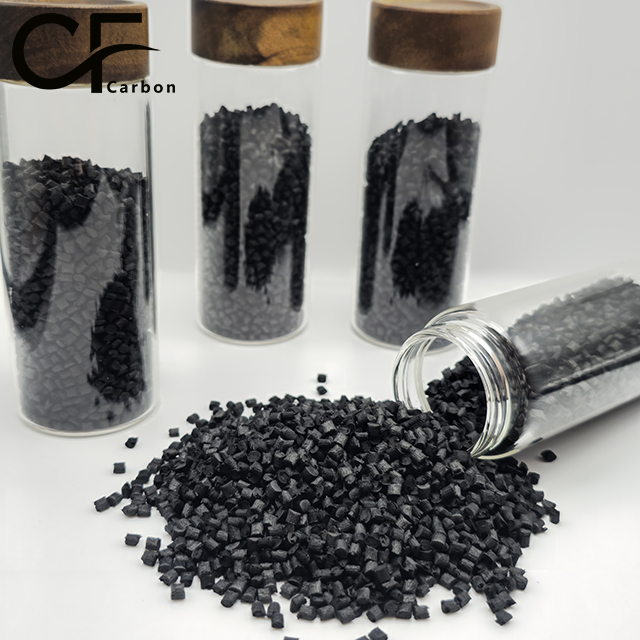
Conductive Heat Resistant PA6 CF30 Plastic Raw Materials
Heat resistant PA6 CF30 (30% Carbon fiber-reinforced PA6 ) compounds produced by Carbon Element (Xiamen) New Materials Co., Ltd. can be used for metal replacement, special grades of advanced aesthetic solutions that meet specific engineering properties, including strength, stiffness, weight management, specific gravity or solid feel, and heat resistance. , chemical resistance and dimensional stability.
- Model No.: PA6-CF-BCA3
- Matrix resin: Nylon 6
- Filler: Carbon fibers, additives, etc.
- Manufacturer: Yes
- Origin: Xiamen
- Free samples: 1-10kgs
- Color: Black
What’s it heat resistant PA6 CF30?
Conductive heat resistant PA6 CF30 plastic raw materials offer a versatile solution in engineering applications where thermal stability, strength, and electrical conductivity are paramount.
Polyamide 6 (PA6) reinforced with 30% carbon fiber (CF30) creates a composite material that excels in demanding environments, combining the inherent properties of PA6 with the enhanced characteristics imparted by carbon fiber.
PA6, known for its excellent mechanical strength, stiffness, and chemical resistance, serves as the base polymer. When reinforced with 30% carbon fiber, these properties are further enhanced, making the material exceptionally strong and rigid.
This reinforcement also improves dimensional stability and resistance to creep under mechanical load, crucial for parts subjected to thermal cycling and mechanical stress.
Why to choose heat resistant PA6 CF30?
One of the key advantages of conductive heat resistant PA6 CF30 lies in its ability to dissipate heat effectively. Carbon fiber, known for its high thermal conductivity, facilitates efficient heat transfer within the material.
This feature is particularly beneficial in applications where thermal management is critical, such as automotive components, electronic housings, and industrial machinery parts. By reducing the risk of overheating, the material enhances the reliability and longevity of the components.
Electrical conductivity is another significant characteristic of PA6 CF30. The carbon fiber reinforcement provides a conductive pathway throughout the material, enabling static dissipation and EMI shielding capabilities.
This makes the material suitable for electronics enclosures, where protection against electromagnetic interference (EMI) is essential to ensure the proper functioning of sensitive electronic components.
Moreover, PA6 CF30 retains excellent processing characteristics despite its reinforced nature. It can be injection molded with relative ease, allowing for complex geometries and precise molding of intricate details.
This processability contributes to cost efficiency in manufacturing, as well as flexibility in design, enabling engineers to optimize part performance while maintaining production efficiency.
In terms of thermal stability, conductive heat-resistant PA6 CF30 exhibits a high heat deflection temperature (HDT), typically exceeding that of standard PA6.
This property ensures that the material retains its mechanical integrity and dimensional stability even at elevated temperatures, making it suitable for applications where exposure to heat is a concern.
Where to use it?
Applications for conductive heat resistant PA6 CF30 span a wide range of industries. In automotive engineering, the material is used for under-the-hood components, such as engine covers and intake manifolds, where resistance to heat and mechanical stress are crucial.
In electronics, it finds use in housings for electrical connectors and modules, providing both thermal management and EMI shielding. Industrial applications include machinery components and tooling, benefiting from the material’s durability and thermal performance.
conductive heat resistant PA6 CF30 plastic raw materials represent a robust choice for applications demanding a combination of thermal stability, mechanical strength, and electrical conductivity.
By leveraging the synergistic properties of PA6 and carbon fiber, this composite material offers engineers a versatile solution to meet the challenges of modern engineering designs across various industries.
Its ability to withstand high temperatures, manage heat effectively, and provide electrical conductivity makes it a preferred choice for critical applications where performance and reliability are paramount.
Read more about Nylon thermoplastic composites with carbon fiber reinforced
Stable resistance excellent performance
PA6 CF30 carbon fiber professional conductive, anti-static plastic raw materials, stable resistance, excellent performance!


Professional & Choice
PA6 CF30 plastic carbon fiber reinforced nylon 6 injection grade extrusion grade high rigidity and high wear resistance.
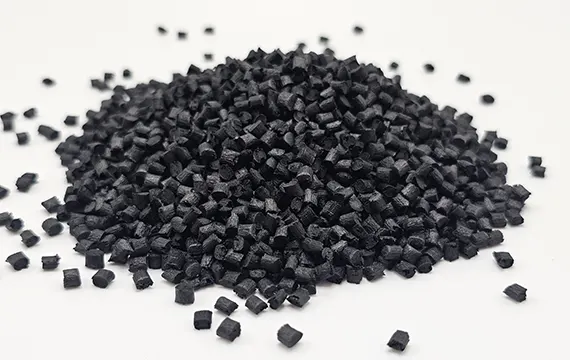
Frequently Asked Questions
Carbon (Xiamen) New Material Co., Ltd. aims to provide buyers with "one-stop" worry-free high-quality services. Here you can find all information about carbon fiber engineering plastics. If you still have questions, please send us an email for consultation!
-
How can I contact the manufacturer of a product that interests me?
When you find a product you are interested in, you can contact the manufacturer directly by sending an email and we will get back to you as soon as possible.
-
How do I find the products that interest me?
All you need to do is enter the keyword, product name in the search window and press the Enter key on your keyboard. Your search results page will then be displayed. You can also search within the product category pages on the home page. Each category is divided into subcategories, allowing you to refine your search and find products that interest you.
-
Where will I find a buying guide?
Please contact our after-sales service directly and we will provide you with a comprehensive operating guide.
-
What are CF Reinforced Thermoplastic Composites?
CF Reinforced Thermoplastic Composites are materials where carbon fibers are incorporated into a thermoplastic matrix. They combine the strength and stiffness of carbon fibers with the processability and recyclability of thermoplastics. For instance, they are used in automotive parts like bumper beams.
-
What are the benefits of CF Reinforced Thermoplastic Composites over traditional composites?
The key benefits include faster production cycles, easier recyclability, and better impact resistance. They also offer design flexibility. An example is in the manufacturing of consumer electronics casings where complex shapes can be achieved more easily.
-
How are CF Reinforced Thermoplastic Composites processed?
Common processing methods include injection molding, extrusion, and compression molding. Injection molding is widely used for mass production. For example, in the production of small components for the medical industry.
-
What industries use CF Reinforced Thermoplastic Composites?
They are utilized in aerospace, automotive, medical, and sports equipment industries. In aerospace, they can be found in interior components. In the medical field, they might be used in prosthetics.
-
How does the carbon fiber content affect the properties of the composites?
Higher carbon fiber content generally leads to increased strength and stiffness but may reduce ductility. A moderate content is often balanced for specific applications. For example, a higher content might be preferred in structural parts of a race car.
-
What are the challenges in using CF Reinforced Thermoplastic Composites?
Challenges include higher material costs, complex processing equipment requirements, and ensuring uniform fiber dispersion. Issues with adhesion between the fibers and the matrix can also arise. An example is in achieving consistent quality in large-scale production.









